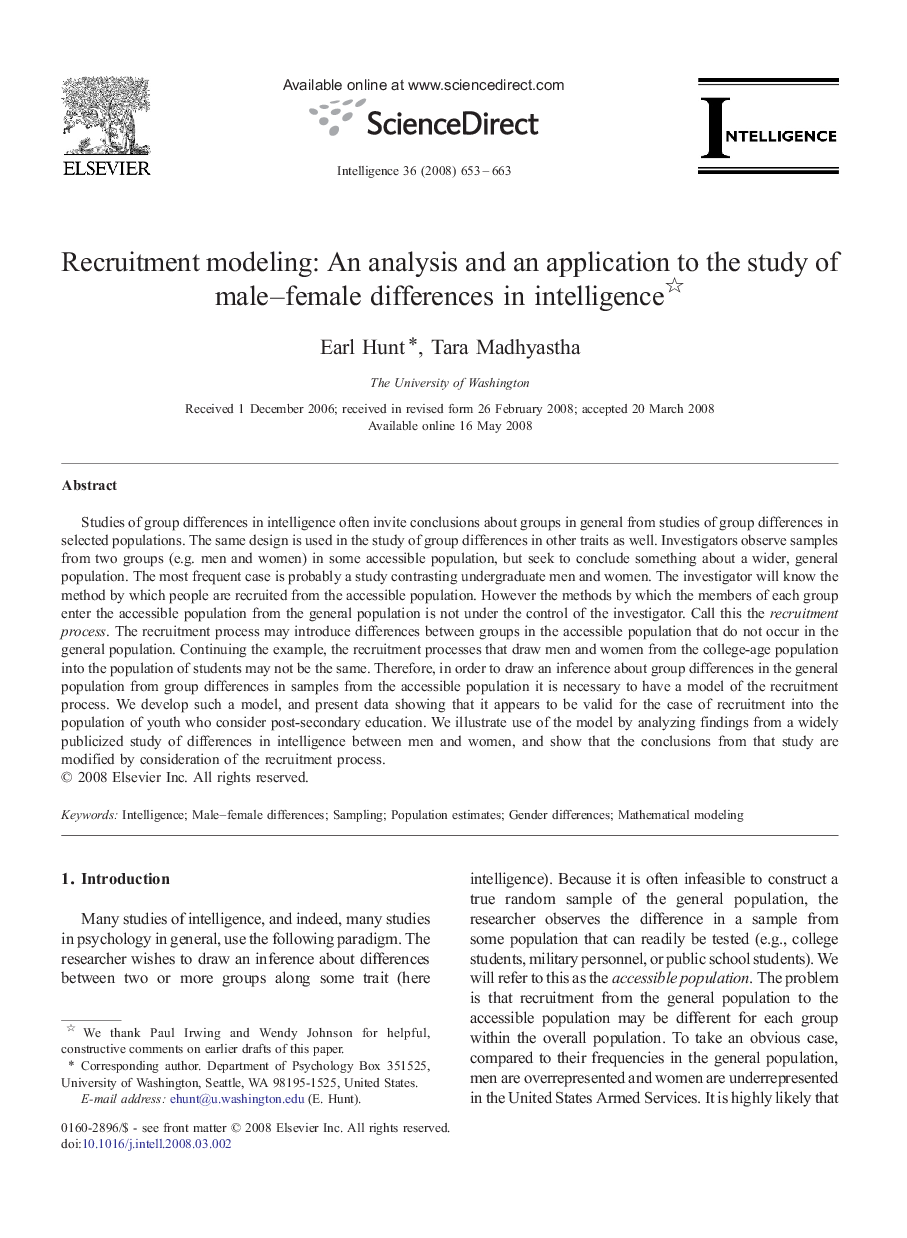| Article ID | Journal | Published Year | Pages | File Type |
|---|---|---|---|---|
| 929244 | Intelligence | 2008 | 11 Pages |
Studies of group differences in intelligence often invite conclusions about groups in general from studies of group differences in selected populations. The same design is used in the study of group differences in other traits as well. Investigators observe samples from two groups (e.g. men and women) in some accessible population, but seek to conclude something about a wider, general population. The most frequent case is probably a study contrasting undergraduate men and women. The investigator will know the method by which people are recruited from the accessible population. However the methods by which the members of each group enter the accessible population from the general population is not under the control of the investigator. Call this the recruitment process. The recruitment process may introduce differences between groups in the accessible population that do not occur in the general population. Continuing the example, the recruitment processes that draw men and women from the college-age population into the population of students may not be the same. Therefore, in order to draw an inference about group differences in the general population from group differences in samples from the accessible population it is necessary to have a model of the recruitment process. We develop such a model, and present data showing that it appears to be valid for the case of recruitment into the population of youth who consider post-secondary education. We illustrate use of the model by analyzing findings from a widely publicized study of differences in intelligence between men and women, and show that the conclusions from that study are modified by consideration of the recruitment process.
